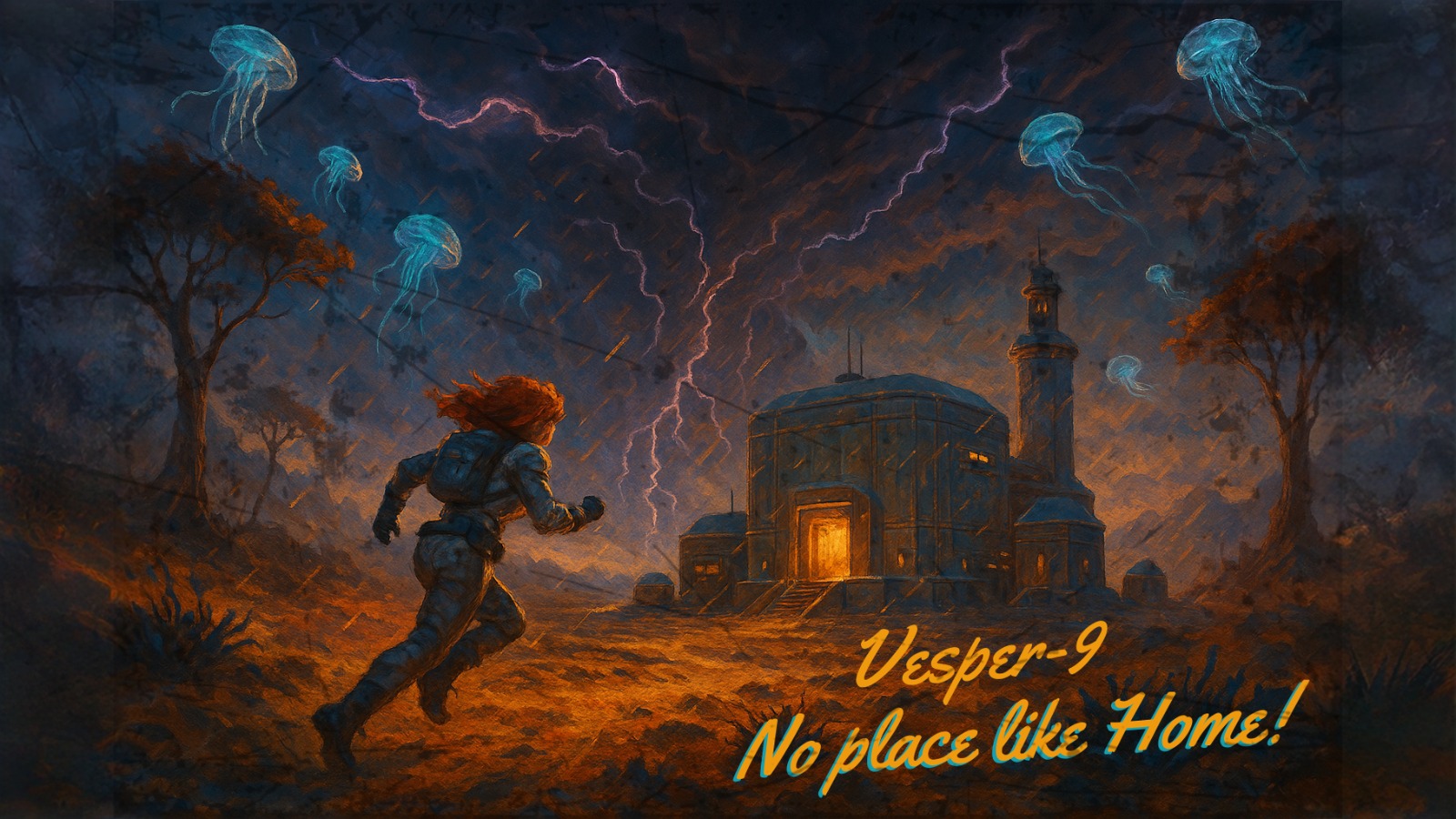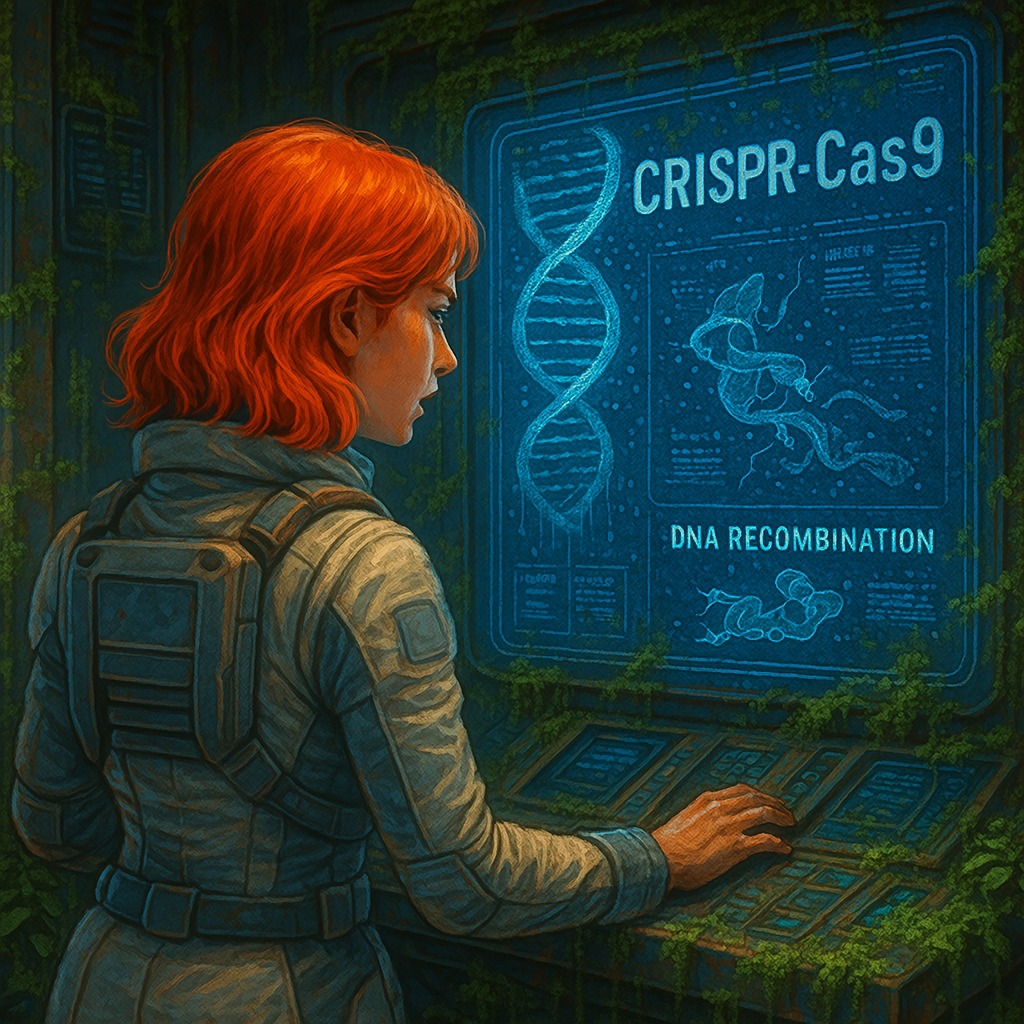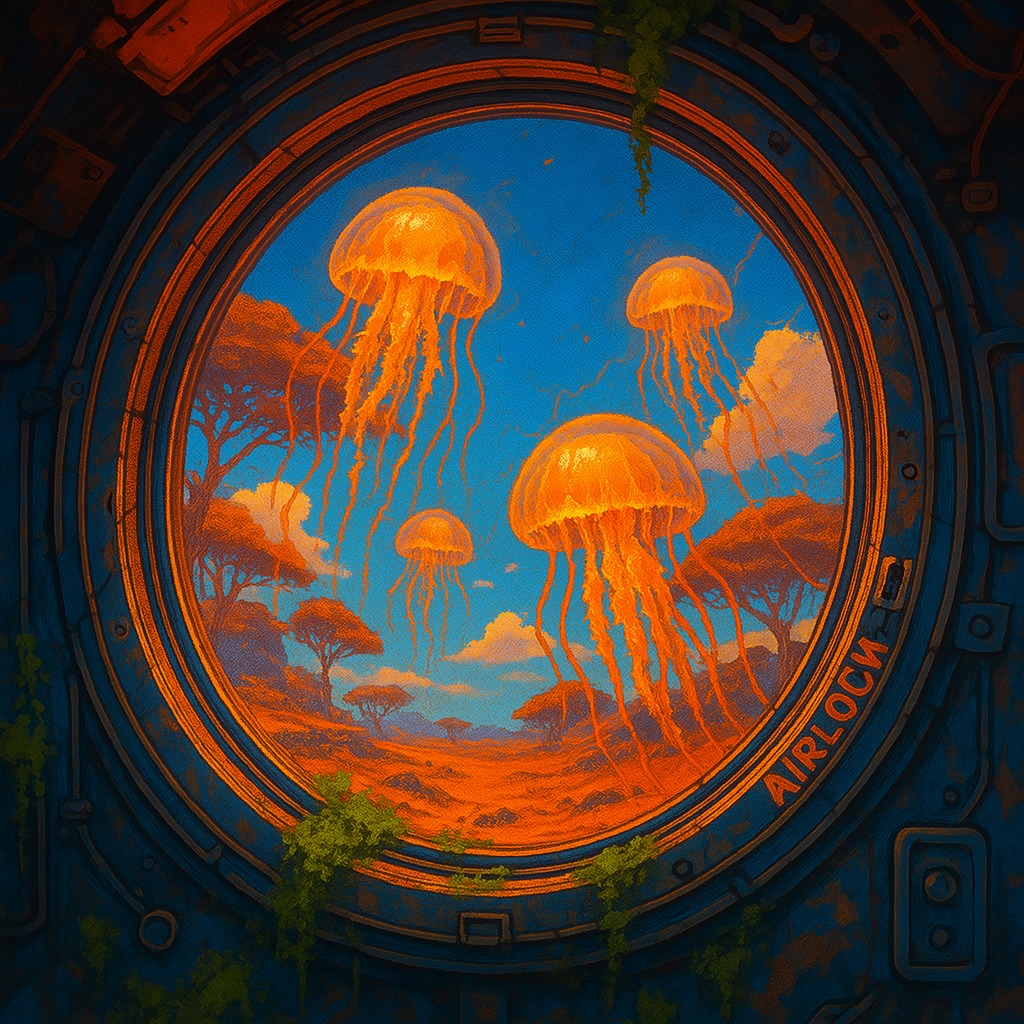CRISPR and the Codex of Life: "The Breath of Vesper"
"There’s something unsettling about watching life change at the molecular level. It doesn’t crackle with electricity or announce itself with a burst of light. It just happens—quietly, invisibly, permanently."
Opening Narrative
"There’s something unsettling about watching life change at the molecular level. It doesn’t crackle with electricity or announce itself with a burst of light. It just happens—quietly, invisibly, permanently."
Kael stood in the dim light of the Helix Genesis Lab, analyzing Vesper-9’s air composition. The readings showed oxygen, nitrogen, and something else—an element that didn’t exist on Earth’s periodic table. Yet it didn’t appear hostile. As he removed his helmet for the first time, the sensation was immediate: the air didn’t just sustain him—it welcomed him.
What is CRISPR-Cas9?
CRISPR began as a humble bacterial defense system—nature’s way of fighting viruses. Humanity turned it into a genetic scalpel. Cas9, the protein blade, could be guided by RNA to cut DNA with surgical precision. Compared to its predecessors—zinc-finger nucleases, TALENs—it was simpler, faster, and remarkably versatile.
Kael’s own DNA had been edited with this tool. His immune system had been tailored for adaptation, his cells enhanced for resilience. What no one could have predicted was how this alien biosphere would interact with those modifications.
His genes weren’t just adapting. They were communicating—with the environment, with something unseen. It was no longer just about survival; it was about transformation.
KIM Concept Integration – Knowledge & Innovation Management in Action
CRISPR wasn’t a singular invention. It emerged from a global mosaic of scientific exploration—bacterial immunity, molecular biology, RNA science. Its success was a testament to Absorptive Capacity, as researchers drew from nature and repurposed it for humanity’s most daring experiments.
But this innovation didn’t follow a straight line. Earlier technologies—meganucleases, zinc-finger tools—paved the way. Their shortcomings led to a shift, demonstrating Path Dependency in action.
The Locus of Innovation had shifted over time. From academic labs to biotech startups, to Kael’s isolated workbench on an alien world. CRISPR now lived at the edges of civilization, where survival and progress demanded it.
And just like Technology Trajectories, the evolution of gene editing was accelerating. What began as disease prevention had become biological customization. Kael’s own body now stood at the frontier of what was once theoretical.
CRISPR’s integration into field environments like Vesper-9 reflected its journey from lab experiment to a cornerstone of New Product Development (NPD). It evolved from research to real-world application, representing a shift from concept to tangible solution—one customized to Kael’s survival and adaptability. In NPD terms, Kael himself had become a “new product”—an engineered outcome of scientific advancement, purpose-built for a hostile and unpredictable world. His transformation illustrated the power and complexity of translating emerging technologies into viable, adaptable outputs.
Critical Reflection – Who Controls Evolution?
Kael gazed at the swirling data streams. His genes were rewriting themselves, but under whose authorship? CRISPR had given humanity the pen—but it had never defined the rules.
Once, gene editing had been about healing. But now, it raised questions of design. Who decides which traits are desirable? If genetic code became intellectual property, would life itself become commodified?
Kael realized he wasn’t just surviving evolution—he was embodying a new version of it. But the thought that haunted him was not whether it worked, but whether it should.
Explorer’s Reflection (Personal Touch)
Kael had prepared for hardship, for science, even for alien storms. But he hadn’t prepared to feel at home. The air of Vesper-9 filled his lungs like memory. His DNA was adapting too fast—Pip warned him. But he couldn’t shake the feeling that something in this world had been waiting for him.





THEORETICAL EXPLANATION – CRISPR (Work-In-Progress)
CRISPR is a natural immune system found in bacteria and other types of microorganisms. Just like humans have immune systems to fight viruses, bacteria have CRISPR to defend themselves against viruses. Bacteria use CRISPR to cut the invading virus’ DNA and disable it.
CRISPR referred to as CRISPR-Cas9 system is a genomic editing system that is highly versatile and revolutionary, precisely enabling genomes editing. It has the potential to treat and model a wide range of diseases, including cancers, genetic disorders, viral infections, as well as an immunological and neurological therapeutic tool thanks to its ease of use, cost effectiveness and high efficiency. This implies that gene-editing is no longer limited to large search labs with abundant resources. Smaller labs can also adopt this technology.
The way it works, the enzyme that act like scissors can cut DNA precisely. And a short RNA sequence guides the Cas9 enzyme to the exact location in the DNA where the cut should occur. The scientists design a guide RNA to match a specific target DNA sequence within a cell.
The CRISPR case can be considered a disruptive innovation. This also means that managers must anticipate regulatory and ethical implications and integrate external knowledge effectively (high absorptive capacity). It also emphasizes the critical role of continuous innovation and adaptability. If companies fail to recognise disruptive innovation there is a high risk they find themselves outpaced.

